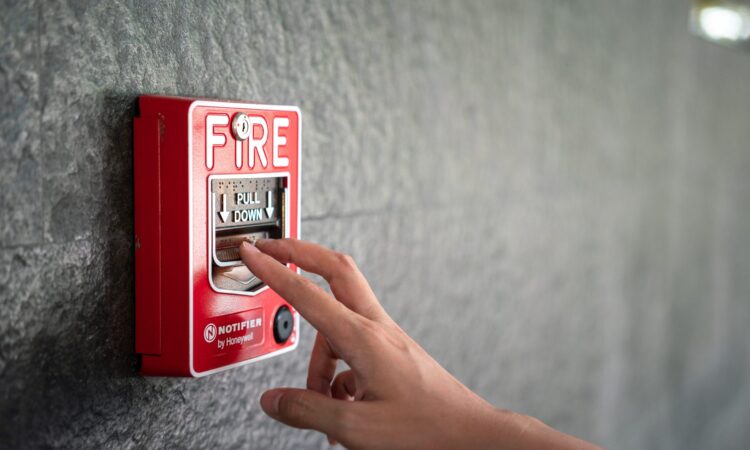
Understanding Flame Detectors
Flame detectors are indispensable devices meticulously designed to detect and respond swiftly to the presence of fires in diverse environments. Whether safeguarding industrial settings, commercial buildings, or maritime vessels, flame detectors serve as vital components in the arsenal of fire detection and prevention measures. These sophisticated devices leverage advanced technologies to identify the distinct signatures of flames, enabling prompt alerts and facilitating timely interventions to mitigate potential risks.
Types of Flame Detectors
In the realm of flame detection, a plethora of options exists, each offering unique features and capabilities tailored to specific needs. Among the commonly employed types are infrared (IR) flame detectors, ultraviolet (UV) flame detectors, and combination detectors amalgamating both IR and UV technologies. For instance, infrared flame detectors operate by sensing the infrared radiation emitted by flames, while UV flame detectors detect the ultraviolet radiation produced by flames. The versatility and adaptability of these detectors empower users to select the most suitable option for their respective environments and fire detection requirements, thereby enhancing overall fire safety.
How Flame Detectors Work
The operational mechanics of flame detectors hinge upon specific principles and cutting-edge technologies aimed at facilitating accurate flame detection. Infrared flame detectors, for instance, utilise sensors endowed with sensitivity to infrared radiation emitted by flames. Upon detecting a flame, the detector promptly triggers an alarm, thereby alerting personnel to the potential fire hazard. Similarly, UV flame detectors rely on sensors adept at detecting the ultraviolet radiation emitted by flames, offering reliable detection capabilities even in challenging environments characterised by high background radiation levels.
Advantages of Using Flame Detectors
The integration of flame detectors into fire safety systems confers numerous advantages, bolstering fire prevention efforts and fortifying overall safety protocols. These devices excel in providing early detection of fires, thereby facilitating swift responses and interventions aimed at preventing the escalation of fire incidents. By detecting fires at their nascent stages, flame detectors play a pivotal role in minimising property damage, mitigating the risk of injuries, and potentially saving lives. Additionally, flame detectors are renowned for their reliability and robustness, offering uninterrupted monitoring capabilities in a diverse array of environmental conditions.
Factors to Consider When Choosing a Flame Detector
Selecting the most suitable flame detector for a particular application necessitates meticulous consideration of several factors to ensure optimal performance and efficacy. These factors encompass the type of environment where the detector will be deployed, the desired detection range and sensitivity, the level of resistance to false alarms, and the maintenance requirements of the detector. By thoroughly evaluating these factors, stakeholders can make informed decisions and select flame detectors best suited to their unique fire safety needs, thereby enhancing overall safety and preparedness.
Installation and Maintenance of Flame Detectors
Achieving optimal performance and reliability from flame detectors hinges upon meticulous installation and diligent maintenance practices. During installation, strategic placement of detectors is imperative to maximise coverage and detection capabilities, thereby bolstering overall effectiveness. Routine inspection and testing are equally indispensable, serving to verify the proper functioning of detectors and identify any potential issues that warrant attention. Common maintenance practices entail regular cleaning of detectors and calibration as needed, ensuring sustained optimal performance and reliability.
Applications of Flame Detectors
Flame detectors find a myriad of applications across diverse industries and settings, including but not limited to oil and gas facilities, chemical plants, commercial buildings, warehouses, and maritime vessels. In industrial environments, flame detectors are seamlessly integrated into fire safety systems, safeguarding critical assets, equipment, and personnel from the inherent risks posed by fires. Similarly, in commercial buildings and maritime vessels, flame detectors play an instrumental role in ensuring the safety of occupants and averting fire-related incidents, thereby underpinning overall safety and security.
Regulations and Standards for Flame Detectors
Flame detectors are subject to stringent regulations and standards governing their design, installation, and operation to ensure compliance with rigorous safety requirements. International standards and guidelines delineate specifications for the performance and reliability of flame detectors, delineating best practices for their utilisation across a spectrum of applications. Adherence to these regulations and standards is paramount, fostering a safe and secure environment while minimising the risks associated with fires, thereby upholding overall safety and preparedness.
Future Trends in Flame Detection Technology
As technological advancements continue to unfold, the landscape of flame detection technology undergoes continual evolution, characterised by ongoing innovations and developments. Future trends in flame detection technology encompass an array of advancements spanning sensor technology, integration with IoT (Internet of Things) and AI (Artificial Intelligence), and the implementation of predictive maintenance features. These advancements serve to augment detection capabilities, enhance monitoring and predictive capabilities, and optimise the performance and reliability of flame detectors, thereby shaping the future trajectory of fire safety and preparedness.
